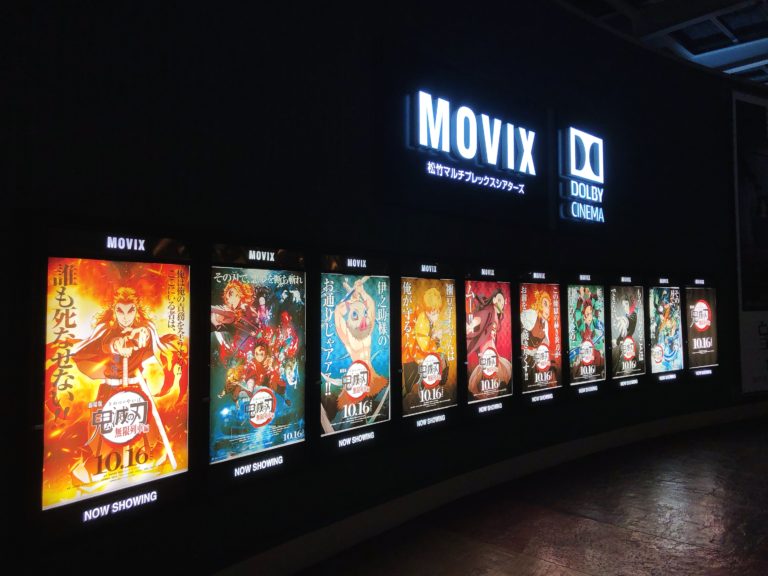

But they’ve never faced adversaries as daunting as this, starting with the creepy Kizuki riding on the roof of the train. Think of these four as amateur Ghostbusters, or a teenage team of vampire hunters, whose well-intentioned incompetence often proves endearing. Instead, the filmmakers assume a certain familiarity, getting right down to business once Tanjiro and friends board the titular Mugen Train: a cross-country transport whose 200 passengers become easy targets for the Kizuki who has commandeered the locomotive.ĭemons, who are described as former humans who’ve turned evil in exchange for immortality, gain power by eating people, whereas demon slayers are mere mortals sworn to protect the world from the bloodthirsty creatures. So after all those hours of watching Tanjiro and friends fumble their way through various skirmishes, fans will consider it a big payoff to see how veteran warriors from both sides throw down.ĭirector Haruo Sotozaki doesn’t deem it necessary to reintroduce the characters, nor to explain basic aspects, such as Inosuke’s strange appearance - he’s not a hog-headed mutant so much as an aggro dude in a crazy costume - or how exactly one slays a demon (simple: chop off its head or expose it to sunlight). The show has effectively been laying the groundwork for showdowns such as these - though the four aspiring demon slayers are so inexperienced they’d be toast without the help of a skilled mentor like Kyojuro Rengoku, a so-called Hashira (the top tier of demon slayer, or good-guy equivalent of a Kizuki). That’s a major selling point for the feature. Now, they face not one but two of the world’s most powerful demons, known as Kizuki, whose existence had long been rumored, though they did not reveal themselves until the final episodes of Season 1 (and even then, audiences never saw the six Upper Rank demons that are deadliest to humankind). This overconfident quartet spent most of the show nearly getting themselves killed as they tried to fend off low-level foes. There, the battles came at a fairly constant clip while leaving plenty of room for goofing off along the way.

“Demon Slayer” devotees swear by the characters and oddball sense of humor, but are most appreciative of the show’s dynamic fight scenes, which are frequent and creatively choreographed (those being key criteria for a genre whose essential raison d’être is action).

The film depicts an important step in the development of its four young protagonists - orphan Tanjiro his demon sister Nezuko, whom he carries in a wooden box on his back girl-crazy Zenitsu and absurd-looking Inosuke with his bare chest and boar’s head mask (all voiced by the original cast). “Mugen Train” is more than just a bridge to the forthcoming second season, due out this year. At times, the imagery hardly qualifies as animation, coming across as a sequence of still drawings: fixed expressions and poses that suggest emotion or energy, even when nothing is actually moving in the frame - though this is hardly unusual in the manga-inspired medium, which relies on such tricks to tell elaborate stories on modest budgets. The slight downgrade in quality may come as a surprise to those expecting slicker visuals from the theatrical blockbuster. Produced by the same team at Ufotable, “ Demon Slayer the Movie: Mugen Train” looks even more rudimentary than its small-screen counterpart, “Demon Slayer: Kimetsu no Yaiba,” which has amassed a cult following among Funimation, Crunchyroll and Netflix subscribers in the U.S. But it will be hard for newbies to follow a fan-service sequel that relies heavily on the complex mythology established by the 26-episode show. That doesn’t mean the action-packed toon won’t appeal to those curious to check out the sensation that has earned more than $415 million internationally. You’re either already on the “Demon Slayer” train or you’re not, and the hit Japanese feature - arriving stateside having surpassed “Spirited Away” as the highest-grossing anime movie of all time - is hardly the vehicle for the popular franchise to pick up new passengers.


 0 kommentar(er)
0 kommentar(er)
